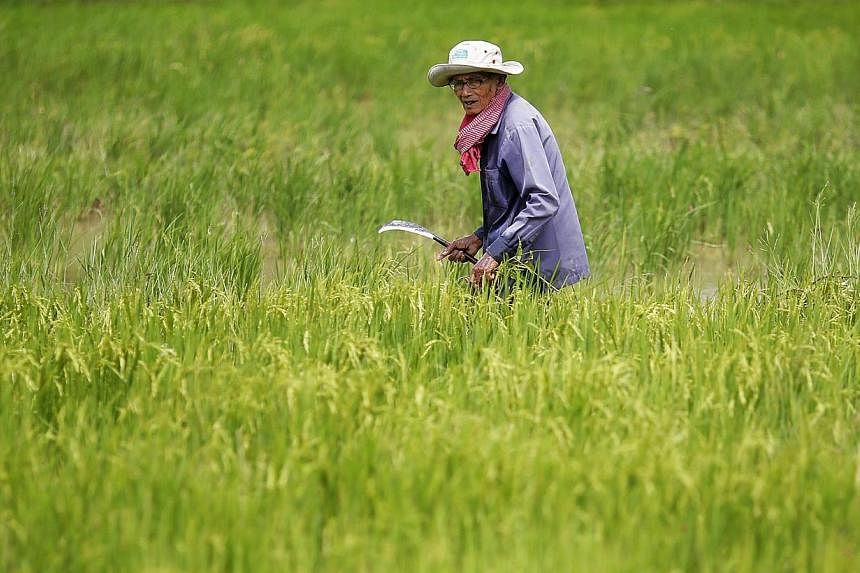Asean marked its 47th anniversary on Aug 8 last week. This provides an occasion to assess accomplishments and dwell on tasks yet to be achieved, as the 2015 deadline for the formation of the Asean Community approaches.
It is widely accepted that Asean is already a political community. The discussions on regional security among the Asean members and their dialogue partners, together with countries from a wide geographical reach, highlight the interlinked nature of this well-established political-security cooperation.
Asean has also focused on getting the economics right. The Asean Free Trade Area, for example, has been a reality since 2003.
Yet for many citizens, Asean integration is still a rather abstract concept. The challenge is to make the organisation more relevant, by making it more people-centred.
Asean's community-building efforts in the socio-cultural sphere include collective measures to reduce poverty, raising education standards, giving a stronger voice to women and youth, and ensuring efficient and effective health systems with scaled-up disease prevention and control. There have also been moves to halt the loss of environmental resources and to promote a strong sense of community.
There are some quiet successes that Asean can use to increase its relevance to the people.
Not many regional organisations can list more than one regional human rights body. Asean has two. They are the Asean Intergovernmental Commission on Human Rights, and Asean Commission on the Promotion and Protection of the Rights of Women and Children.
These two commissions provide platforms to address human rights issues common to the Asean countries, such as people trafficking, gender discrimination, child protection, migration, and responsible corporate behaviour. There is also a separate mechanism - the Asean Committee on Migrant Workers - established under Asean labour cooperation agreements. It is working on a more legally-binding instrument for migrant worker protection, to be launched by next year.
In the wake of the Cyclone Nargis tragedy in Myanmar in May 2008, Asean initiated a breakthrough mechanism on humanitarian assistance and cooperation which opened up more venues of strategic cooperation in disasters and emergency response.
The implementation of the Asean Agreement on Disaster Management and Emergency Response in December 2009, and the launch of the Asean Coordinating Centre for Humanitarian Assistance in 2011, have enabled the organisation to respond more effectively to disasters and humanitarian emergencies.
This is complemented by the recent move in April to establish a Humanitarian Assistance and Disaster Relief coordination centre under the Asean defence cooperation framework.
Building on the experience of the 2003 severe acute respiratory syndrome and 2004 avian flu outbreaks, mechanisms and procedures on pandemic preparedness are now in place.
Asean efforts on disaster risk reduction, climate change, and energy and food security are also being supported by greater cooperation in science and technology. Such regional cooperation, however, requires constant effort. Demographic changes taking place in Asean countries, for example, suggest that by 2020, Brunei, Laos, Vietnam, the Philippines and Cambodia (and possibly Myanmar) may have younger populations than the other Asean countries. This will require Asean to respond to changing rural-urban migration and cross-border labour flows.
Environmental degradation, (particularly the recurrent transboundary haze pollution issue), the spread of communicable diseases and the prevention of human trafficking are transnational issues which require effective regional responses.
Managing the social impact of economic integration also requires closer cooperation among and across different sectors to establish common standards for accreditation and approaches to human resource development policies and programmes.
The development gap in Asean will also affect how members achieve their regional commitments. Helping to narrow that gap among and within the Asean countries is currently the responsibility of the Initiative for Asean Integration, adopted at the Informal Asean Summit in Singapore in 2000. Helping Asean's newer members meet their regional commitments through various capacity-building efforts will also contribute towards community building.
For an Asean Socio-Cultural Community (ASCC) to become a reality, however, member states will have to synchronise regional efforts with national plans and priorities, something that may not be easy to achieve.
Asean is taking a pragmatic approach by adjusting milestones and expectations. Pessimists may mourn the incremental progress as lost potential, but optimists will find strengths in the weaknesses. Asean responses will require a mix of flexibility, compassion, resilience and sheer dedication, if the ASCC is to be achieved.
The author is lead researcher for socio-cultural affairs at the Asean Studies Centre, the Institute of Southeast Asian Studies.

